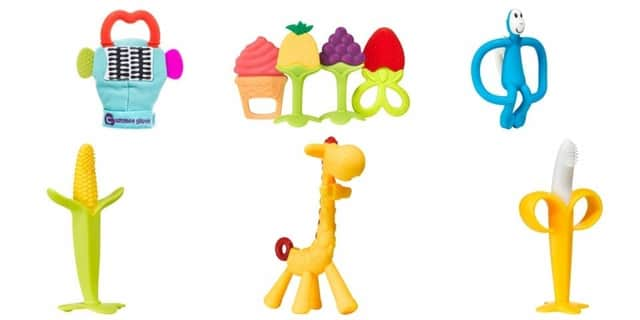These 7 teething toys have been found to pose a choking risk to babies


Consumer watchdog Which? has found seven teething toys that pose a choking risk to babies that were bought from popular retailers like John Lewis and Amazon.
The toys that Which? tested were found to fail the standard safety tests that are designed to see if any parts of the toy detach.
What are the toys?
Advertisement
Hide AdAdvertisement
Hide AdThese are the seven toys that Which? found to pose a choking risk for babies, and where they are or were sold:
Silivo Baby Teether and Toothbrush from the Amazon MarketplaceGupamiga Baby Toothbrush Baby Teether Infant Toothbrush Corn from AmazonMatchstick Monkey Blue Monkey Teething Toy from John LewisIceblueor Giraffe Baby Teether from Amazon MarketplaceTurquoise Gummee Glove inc Red Silicone Heart from AmazonSLGOL Baby Silicone Teething Toys (pineapple only) from Amazon MarketplaceJellystone Designs jchews Moustache Teether from Slumberoo.co.uk
Although the toys tested by Which? were purchased from Amazon and John Lewis, they also found the same toys being sold from retailers like Boots, Mothercare and Argos.
Failed safety tests
Which? said, “During the tension test, part of British Standards-approved assessments for toys for children under 36 months, parts detached that were small enough to be swallowed or inhaled.”
Advertisement
Hide AdAdvertisement
Hide AdWhich? tested 15 teething toys and also conducted an impaction test, which is a test to see “whether there is a risk that the teething toy could block the throat of a child who is too young to sit up unaided”.
Head of home products and services at Which? Natalie Hitchins said, “The safety of teething toys should be absolutely paramount, so it’s shocking that such a high proportion of the products we’ve tested could put children at risk of choking.”
As a result of the testing, Which? has stated that parents should immediately stop using any of the products that failed its testing.
What did the retailers have to say?
After reporting the failures of the products to the Office for Product Safety and Standards, Which? also reported the failures to the retailers and manufacturers.
Advertisement
Hide AdAdvertisement
Hide AdJohn Lewis said, “We take product safety extremely seriously. Matchstick Monkey has demonstrated that this product has passed the relevant independent tests and adheres to international safety regulations.
“In our assessment, we believe this product remains safe and we continue to sell it.”
A spokesperson for Amazon responded, “All sellers must follow our selling guidelines and those who do not will be subject to action including potential removal of their account. The products in question are no longer available.”
What to do if your baby is choking
The NHS has compiled some useful information if your child is choking.
It says:
Advertisement
Hide AdAdvertisement
Hide AdIf you can see the object, try and remove it - but don’t poke around blindly with your fingers as you could make things worse by pushing the object further in and making it more difficult to removeIf your child is coughing loudly, encourage them to keep coughing to bring up what they’re choking onIf the coughing isn’t effective (e.g if it’s silent or they can’t breathe in properly), get help immediatelyIf your child is conscious, but they’re not coughing or the coughing isn’t effective, use back blows
Back blows for babies under one year and over one year require different methods.
For babies under one year old:
Sit down and lay your baby face down along your thighs, supporting their head with your handGive up to five sharp back blows with the heel of one hand in the middle of the back between the shoulder blades
For children over one year old:
Lay the child face down on your lap as you would a baby - if this isn’t possible, support your child in a forward leaning positionGive five back blows from behind
Advertisement
Hide AdAdvertisement
Hide AdIf the back blows haven’t relieved the choking, and the child or baby is still conscious, you should give chest thrusts to infants under one year old and abdominal thrusts to children over one year old.
This creates an artificial cough, increasing pressure in the chest and help dislodge the object.
Click here to read the NHS’s instructions on administering chest and abdominal thrusts.
If the child at any point becomes unconscious, you should:
Put them on a firm, flat surface and shout for helpCall 999 and put the phone on loud speaker so that both hands are freeStart CPR - click here to see the NHS’s advice on resuscitating a baby
This article originally appeared on our sister site Edinburgh Evening News